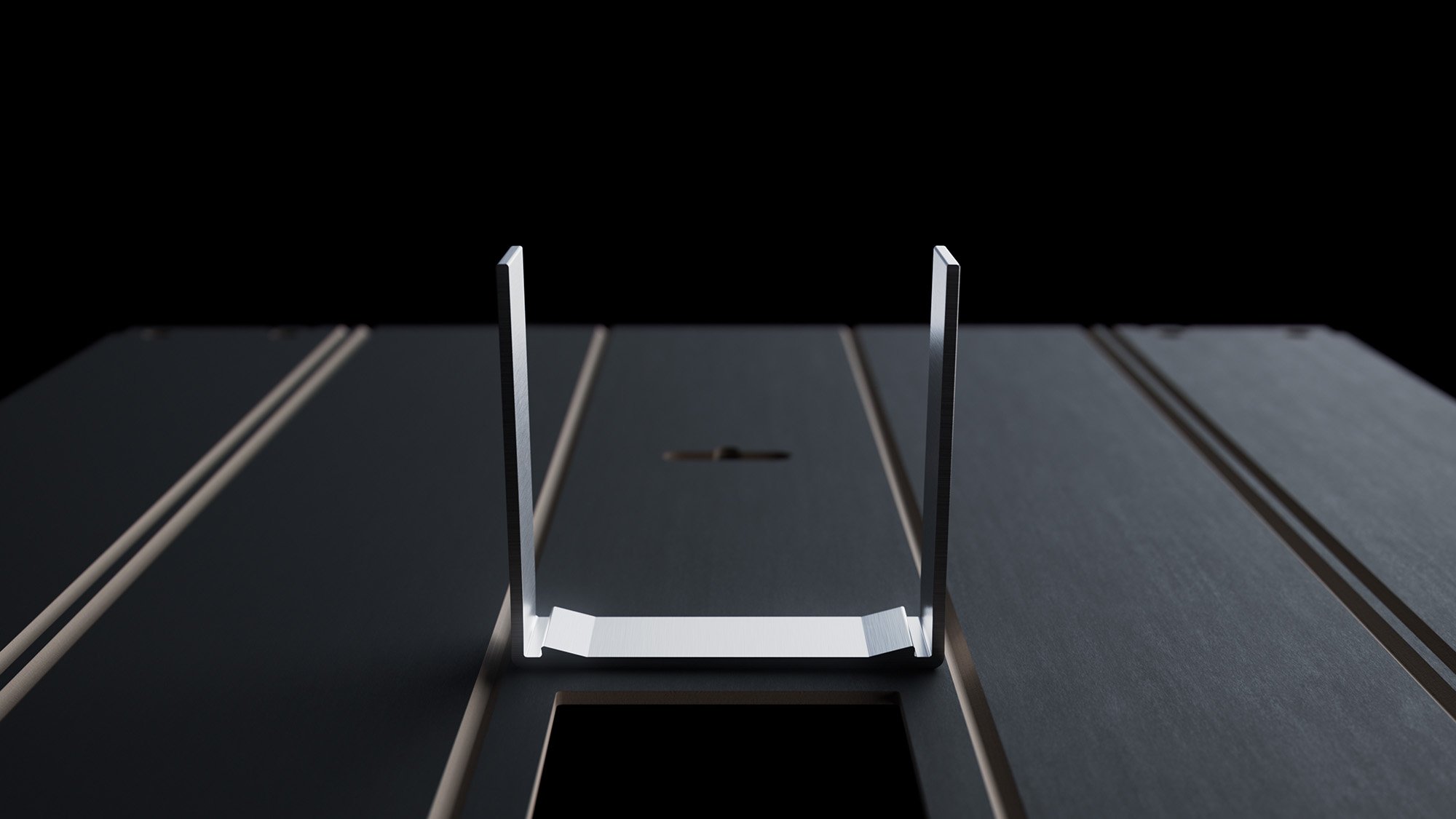
Als materiaal ertoe doet – Wrapped komt met een nieuwe kijk op duurzame verlichting
In een wereld waar elke gram materiaal en elke gram koolstofdioxide telt, duikt Wrapped op niet als een gewoon armatuur – maar als een statement. Het is Fagerhult's meest duurzame pendelarmatuur tot nu toe, en dat is niet per ongeluk zo gekomen. Elk detail, elke beslissing, elk materiaal werd gekozen met een duidelijk plan.
Duurzaamheid begint vaak met een eenvoudige vraag: Waar is het van gemaakt? Voor Wrapped is het antwoord een trio materialen die elk hun eigen milieuverhaal met zich meedragen.
Massief karton: een vertrouwde vriend
Bij Fagerhult vond het eerste gebruik van massief karton in 2021 plaats met Multilume Re:Think. Maar voor Wrapped zijn we nog een stapje verder gegaan. Het materiaal bestaat uit een drielaagse constructie met een 100% gerecyclede kern, een hernieuwbare FSC-gecertificeerde toplaag en een dunne beschermende plastic folie. Een materiaal dat dus al voor 65% gerecycled is – en een 89% lagere CO₂-uitstoot heeft dan nieuw geëxtrudeerd aluminium.
Wrapped is gemaakt van biologisch massief karton, gerecycled aluminium en post-consumer gerecycled plastic.
Plastic opnieuw vormgeven
Plastic wordt vaak genoemd in gesprekken over duurzaamheid. Maar niet alle plastic wordt op dezelfde manier gemaakt. Wrapped gebruikt gerecycled consumentenplastic: het soort plastic dat al eerder een leven heeft geleid, misschien als shampoofles of voedselcontainer. Pre-consumer plastic daarentegen is anders, omdat het nooit eerder in de schappen heeft gestaan.
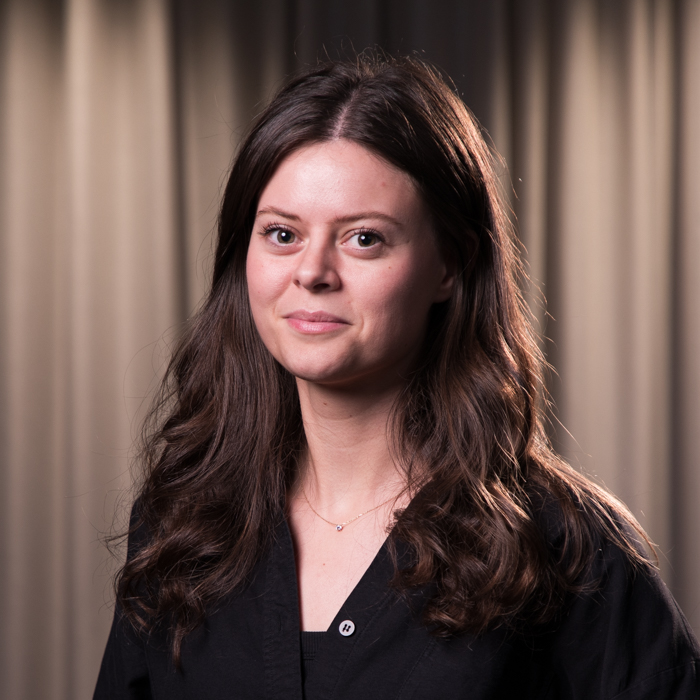 "Door te kiezen voor post-consumer plastic van dezelfde kwaliteit, hebben we de impact op het klimaat met 56% verminderd. Het is een klein onderdeel, maar een groot statement." Josefin Carlsson, duurzaamheidsspecialist bij Fagerhult
"Door te kiezen voor post-consumer plastic van dezelfde kwaliteit, hebben we de impact op het klimaat met 56% verminderd. Het is een klein onderdeel, maar een groot statement." Josefin Carlsson, duurzaamheidsspecialist bij Fagerhult
Aluminium met een verleden
Aan de binnenkant van Wrapped zitten twee structurele onderdelen die zijn gemaakt van 100% post-consumer gerecycled aluminium. Ook dit materiaal maakt deel uit van een circulaire infrastructuur – en heeft misschien ooit wel deel uitgemaakt van een Notor armatuur. In vergelijking met nieuw aluminium vermindert deze keuze de uitstoot met 83%.
Ontworpen met minder - gemaakt om lang mee te gaan
Duurzaamheid gaat echter niet alleen over wat je gebruikt - maar ook over hoeveel. Met slechts 900 mm is Wrapped korter dan een conventioneel pendelarmatuur van 1200 mm. Alleen al die vermindering van de afmetingen verlaagt de impact op het klimaat met 25%, zonder afbreuk te doen aan de verlichtingsprestaties van het armatuur.
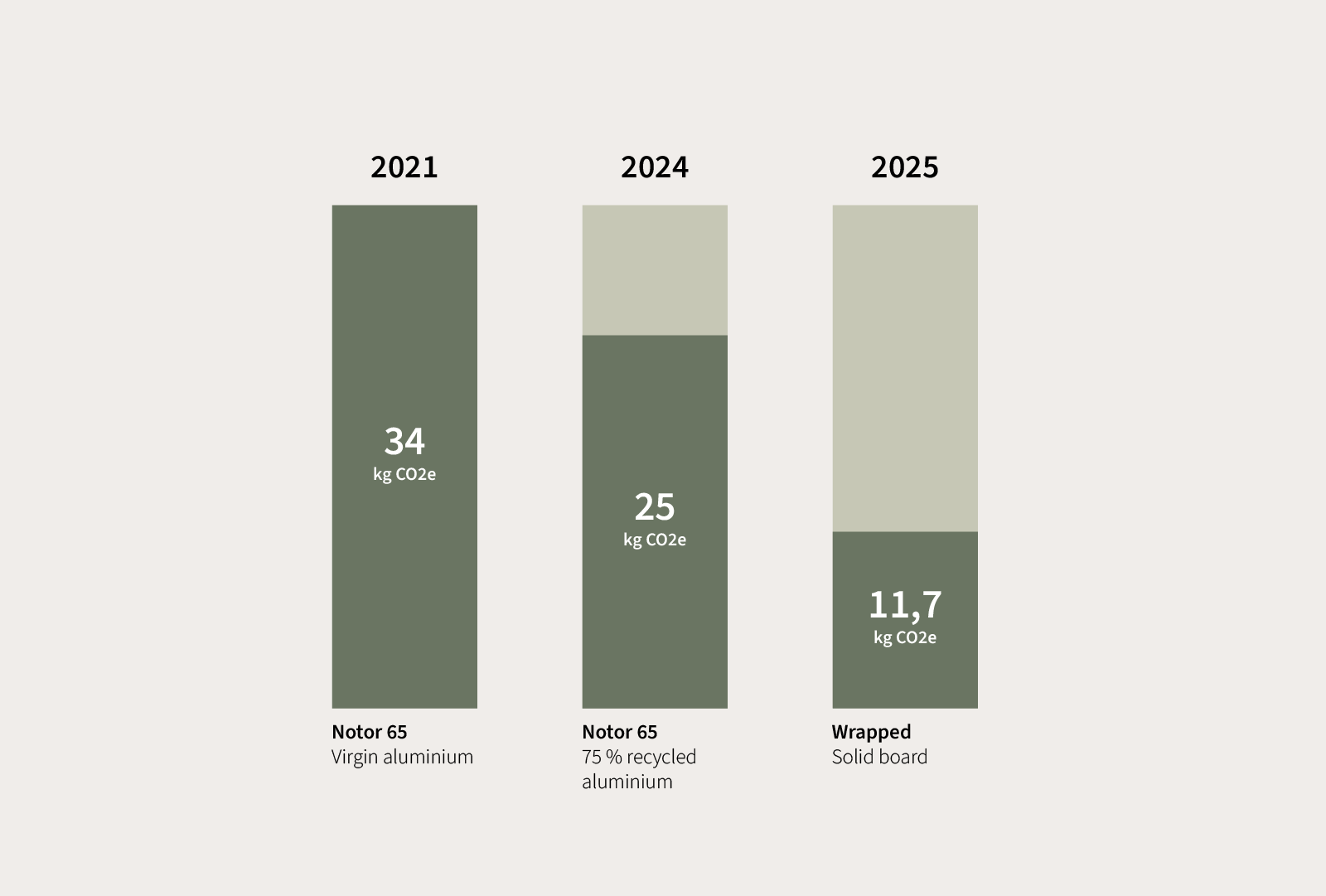
Josefin Carlsson vergelijkt de klimaatimpact van producten in het Fagerhult Experience Centre in Habo.
Om de impact van Wrapped te begrijpen, helpt het om te kijken waar we vandaan komen.
- In 2021 had Notor 65, gemaakt van nieuw aluminium, een klimaatimpact van 34 kg CO₂e.
- In 2024, met 75% gerecycled aluminium, was dat getal teruggebracht tot 25 kg CO₂e.
- En Wrapped komt nu uit op slechts ongeveer 12 kg CO₂e.
"Dat is een derde van de oorspronkelijke Notor 65 en de helft van de huidige uitvoering, en een stille revolutie, gemeten in kilogrammen CO₂e," zegt Josefin Carlsson.
Na een lange levensduur; die wordt geschat op 100.000 uur, is Wrapped klaar voor een al even duurzame exit. Door het ontwerp is het eenvoudig te demonteren, waarbij elk materiaal recyclebaar is en klaar voor een volgend hoofdstuk in de circulaire economie.
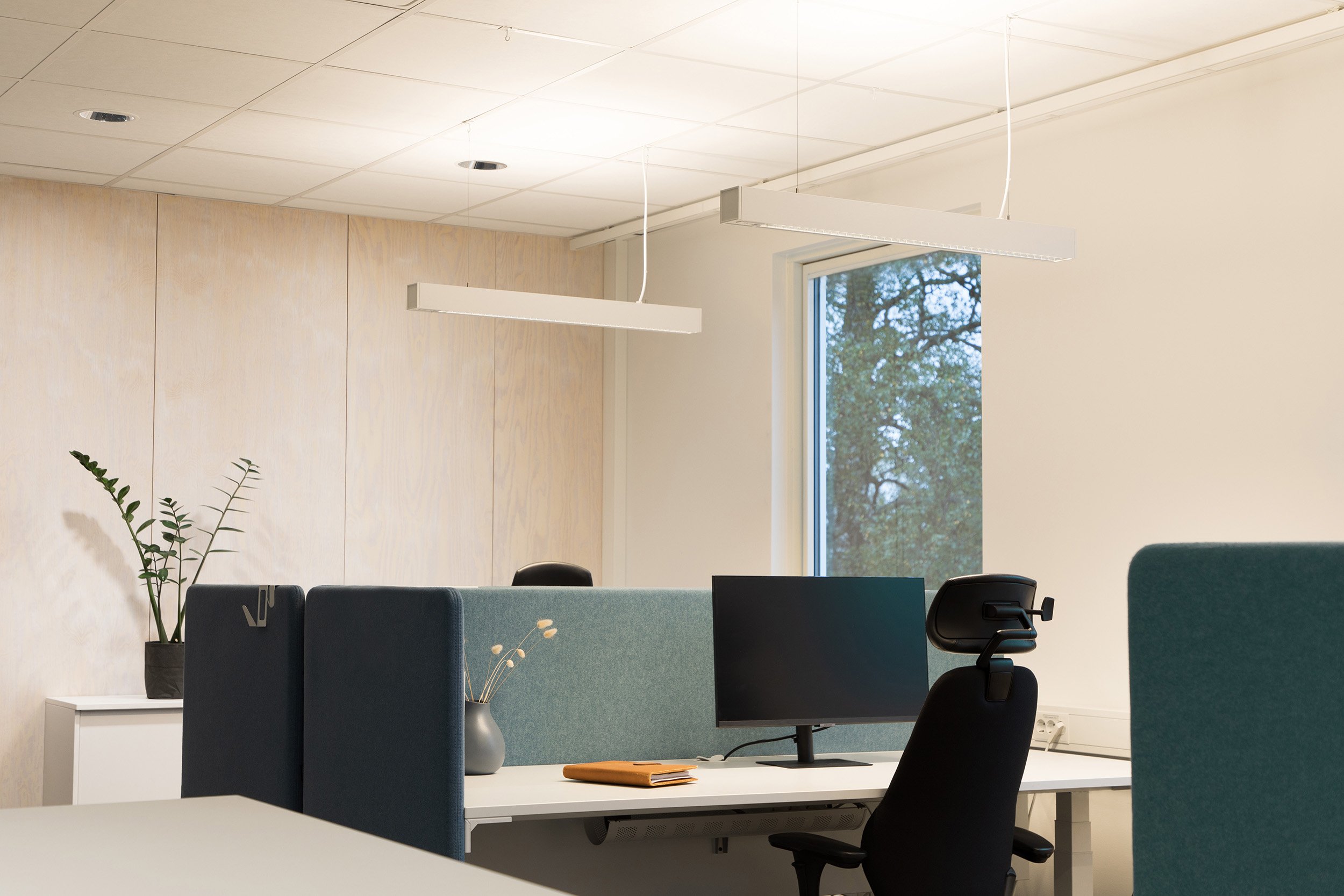
TEKST LINDA KARLSSON
FOTO DENNIS BOIJ / FAGERHULT
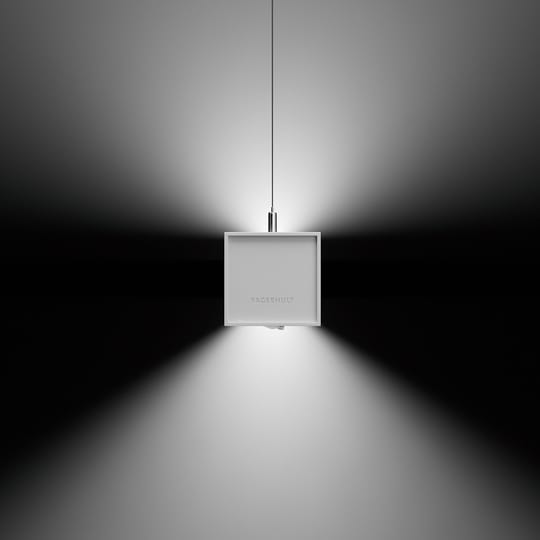
Benieuwd naar Wrapped?
Wrapped belichaamt ons idee om licht te creëren voor een betere toekomst door premium, en duurzame, verlichting toegankelijker te maken.
Meer lezenGerelateerd nieuws

Fagerhult introduces the world’s first premium pendant luminaire made of cardboard
The new Fagerhult luminaire Wrapped is designed and made in Sweden – and combines premium lighting, high efficiency, and low weight with being the company’s most climate-friendly, premium luminaire to date.Wrapped’s luminaire body is made of organic recycled cardboard – Solid board – which has 89% less climate impact per kilogram than aluminium. The few details made of plastic and metal are also sourced from recycled post-consumer materials. The result is a pendant luminaire with minimised environmental impact throughout, without compromising on light quality or design. “By choosing Solid board, we’re stretching the idea that a pendant luminaire must be made of aluminium. We simply asked ourselves: Can we use another renewable and recycled material that is part of an established circular infrastructure?” says Christer Liljegren, Product Manager at Fagerhult.Sustainability meets affordabilityWrapped combines premium lighting performance with a favorable price point – and makes sustainable lighting solutions available to a wider audience. The lighter choice of material also enabled a total weight of 1.6 kilograms (Pendant, 900 mm).“I think the installers will appreciate Wrapped just as much as we do. It really is surprisingly light and easy to handle,” says Christer Liljegren.The launch includes Wrapped Pendant 900 mm. The low amount of material makes it a truly sustainable choice as it performs just as good as a general 1200 mm luminaire in many applications. It is available with the Beta Opti louvre and has a 50/50 direct and indirect light distribution – and maintains excellent visual ergonomics. The product family will be expanded with additional variants in 2026.Continuing a legacy of sustainable innovationWrapped builds on Fagerhult’s innovative work with sustainable materials, following the Multilume Re:Think (also made of Solid board) and the Kvisten wooden luminaire.“Wrapped embodies our idea of light for a brighter tomorrow – combining premium lighting with sustainability at an accessible level,” says Paula Backman, Product and Marketing Director at Fagerhult.
Fagerhult uses recycled aluminium for high-volume products — ensuring circular use of resources
With a focus on reducing its long-term greenhouse gas emissions, Fagerhult now choose extruded aluminium profiles containing 75% recycled material from end users. The material is used for product families manufactured and sold in larger volumes — and where the material can make a real difference. The initiative reduces Fagerhult’s climate footprint by approximately 225 tons of CO2e per year.Aluminium is a lightweight and durable material that can be reused multiple times if recycled properly. Its environmental impact depends on several factors, including whether it is made from virgin aluminium, how it is produced, whether fossil fuels or renewable energy sources were used in its production, and if it is derived from recycled materials.Niclas Thulin is Sustainability Manager at Fagerhult:“We are taking a significant step forward by moving from renewably sourced aluminium to recycled aluminium (post consumer). The Notor family – together with several other product families – is now made of extruded aluminium that is 75% recycled. This results in around 70% lower climate impact than the average impact from European primary aluminium and 88% lower than the global average for primary aluminium*.”The change affects products sold in larger volumes. The products Notor 65, Notor Recessed, Notor 36, Fjord, Vil, Multilume Hydro, and Sentra are now made of recycled aluminium.“We intentionally upgrade the materials for our larger product series because it significantly impacts Fagerhult's greenhouse gas emissions. For the Notor family alone, we used approximately 65 kilometres of aluminium profiles in 2024, and nearly all of this volume has now been replaced with recycled material,” says Niclas Thulin.The change is part of Fagerhult's systematic sustainability work and a considerable step in reducing greenhouse gas emissions in Scope 3: the company's indirect emissions from purchased materials. The Science Based Targets validate Fagerhult's climate targets, and the ambition is to achieve net zero emissions from the entire value chain by 2045.“This is our most important decision regarding materials, at least with reduced climate impact as the fundamental incentive. The majority of our emissions come from Scope 3, and through this change, we are making a difference where it has the greatest impact. Based on last year's volumes, the switch to recycled aluminium can reduce emissions by approximately 225 tons of carbon dioxide equivalents annually.”*Climate impact excluding the extrusion process. EPD compared to the European average for primary aluminium (European Aluminium) and the global average for primary aluminium (International Aluminium).
